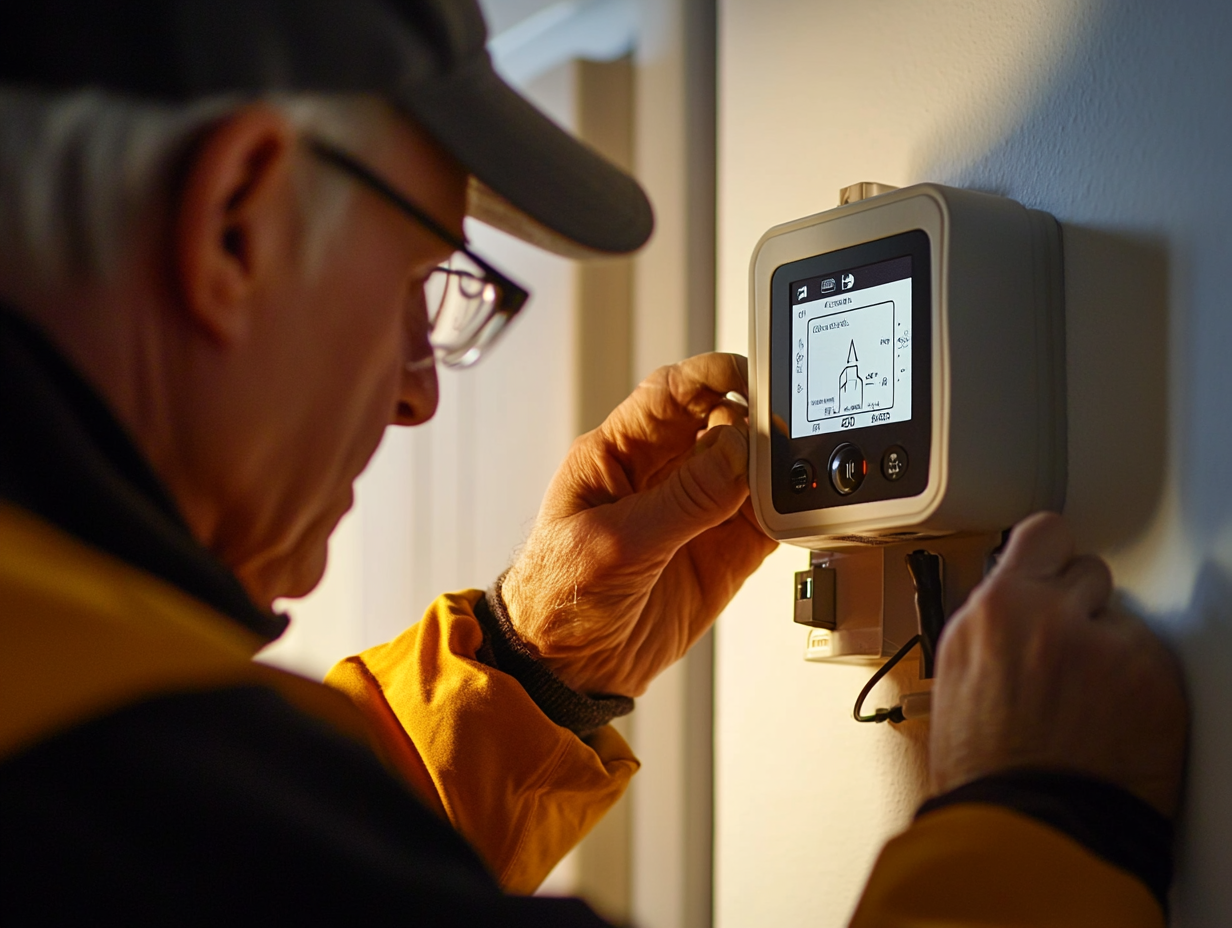
Energy Consumption Data Analytics: Unlocking Efficiency and Savings for Businesses
Estimated reading time: 8 minutes
Key Takeaways
- Energy consumption data analytics is essential for optimizing business energy efficiency.
- Implementing data-driven energy management can lead to significant cost reductions.
- Utilizing advanced tools like smart meters and energy management software enhances energy monitoring.
- Tracking key performance metrics helps businesses achieve their sustainability goals.
- Energy dashboard analytics provide real-time insights for informed decision-making.
Table of contents
Understanding Energy Consumption in Commercial Settings
Energy consumption in a commercial context refers to the total energy used by businesses for various operations. This includes:
- Electricity
- Gas
- Heating
- Cooling
- Other forms of energy
The impact of this energy usage on business costs can be profound. According to statistics from the UK Government, energy costs often represent one of the largest operational expenses for companies, sometimes accounting for up to 30% of total operating costs. With these figures in mind, it’s clear why organizations are increasingly turning to analytics for insights into their energy consumption.
When businesses grasp the full scope of their energy usage, they empower themselves to take actionable steps toward greater efficiency and reduced costs.
The Role of Data-Driven Energy Management
Data-driven energy management is a modern approach that uses advanced analytics to monitor, analyze, and optimize energy usage. This nimble methodology is transforming the way businesses manage their energy resources. Here’s why it’s important:
- Identify Inefficiencies: Advanced analytics help pinpoint areas where energy is wasted.
- Predict Energy Needs: By analyzing historical data, companies can anticipate future energy requirements.
- Targeted Energy-Saving Measures: Businesses can implement specific measures to target areas of high consumption.
With this shift from traditional methods to analytics-based strategies https://www.e2b.uk/energy-consultancy-vs-brokerage, companies can adopt a more proactive stance towards energy consumption. Embracing these innovative techniques signifies a move towards modernization in energy management.
Key Energy Usage Analytics Tools
To effectively monitor and manage energy consumption, several powerful energy usage analytics tools are available today. Here are some of the most popular:
- Smart Meters: These devices provide real-time data on energy usage, which helps businesses to understand and manage their consumption patterns better.
- Energy Management Software https://www.e2b.uk/energy-consultancy-vs-brokerage: This software offers comprehensive analysis and reporting capabilities, enabling organizations to tap into their energy data fully.
- Building Management Systems (BMS): These systems integrate with analytics platforms, providing a holistic view of energy management across different business areas.
The user-friendliness and accessibility of these tools enable seamless adoption across organizations. Companies of all sizes can leverage these advanced capabilities to gain insights into their energy usage.
Commercial Energy Performance Metrics
To ensure optimal energy management, businesses need to track certain commercial energy performance metrics. These metrics help assess the effectiveness of energy usage across operations. Key metrics to monitor include:
- Energy Intensity: This represents the energy used per unit of output or per square foot of the building.
- Peak Demand: This refers to the highest amount of energy consumed during specific peak periods.
- Renewable Energy Usage https://e2b.uk: This metric measures the proportion of energy sourced from renewable methods, giving insights into sustainability efforts.
Monitoring these metrics helps businesses to identify areas for improvement and keep track of their progress towards energy efficiency goals. By analyzing these performance metrics, organizations can implement more informed strategies to enhance their energy practices.
Leveraging Data for Energy Savings
When it comes to leveraging data from analytics for increased energy savings https://www.e2b.uk/business-electricity-rates-uk-guide, businesses can follow a structured approach. Here’s a simple outline of the steps involved:
- Collect Data: Gather comprehensive data from various energy sources and usage points.
- Analyze Patterns: Use analytics tools to identify energy consumption patterns and inefficiencies.
- Develop Strategies: Based on insights from the data, create targeted strategies to address identified inefficiencies.
- Implement Changes: Execute new strategies to optimize energy consumption.
- Monitor Results: Constantly check the results to understand the effectiveness of implemented changes.
For example, data analysis might reveal that certain equipment consumes too much energy during off-hours. By implementing automated systems that power down these resources during non-operational times, businesses can achieve notable savings.
Additionally, ongoing analysis is crucial for sustained energy savings. The energy landscape is not static; it evolves based on technology advancements, operational changes, and market influences.
Energy Dashboard Analytics
Another vital tool in the arena of energy management is energy dashboard analytics https://www.e2b.uk/combined-heat-and-power-businesses. These dashboards provide a centralized view of energy consumption across a business, serving several key functions:
- Real-Time Monitoring: Dashboards display current energy usage, making it easier to spot trends and anomalies.
- Tracking Metrics: They simplify the tracking of essential performance metrics over time.
- Alerts for Unusual Consumption Patterns: Dashboards can trigger alerts when consumption patterns deviate from the norm, providing opportunities for immediate intervention.
Essential features to look for in an effective energy dashboard include:
- User-Friendly Interface: A straightforward and intuitive design that encourages team engagement.
- Ability to Drill Down: Users should be able to explore specific areas or time periods for deeper insights.
- Comprehensive Metric Display: Dashboards should visually present a range of key metrics in an easily digestible format.
With an effective energy dashboard, organizations can enhance their decision-making process and engage in ongoing energy efficiency initiatives with clarity.
Conclusion
In conclusion, energy consumption data analytics stands as a powerful enabler for businesses seeking to optimize their energy management strategies. By leveraging analytics, companies can make informed decisions that lead to tangible cost savings and improved sustainability outcomes.
As the energy landscape continues to evolve, the adoption of data-driven approaches https://www.e2b.uk/combined-heat-and-power-businesses will be vital for organizations aiming to enhance their energy performance. To empower businesses further, it is suggested to explore available tools and strategies that can help leverage analytics for energy optimization.
Call to Action: Start today by assessing your organization’s energy consumption data. Explore resources that provide insights into energy analytics and consider integrating advanced methods into your operations for better energy efficiency.
Additional Resources
For readers seeking further information on energy analytics and management, consider the following resources:
- The UK Government’s Department for Energy Security and Net Zero: UK Government
- Articles on energy efficiency technology and analytics tools.
By exploring these educational resources, businesses can stay informed and implement smart strategies to enhance their energy management systems effectively.
Frequently Asked Questions
- What is energy consumption data analytics?
- How can data-driven energy management save costs?
- What tools are essential for energy usage analytics?
- Why are key performance metrics important in energy management?
- What are the benefits of using energy dashboard analytics?
Energy consumption data analytics involves collecting, analyzing, and interpreting data related to energy usage within a business to optimize efficiency and reduce costs.
By identifying inefficiencies, predicting energy needs, and implementing targeted energy-saving measures, businesses can significantly reduce their energy expenses.
Essential tools include smart meters, energy management software, and building management systems (BMS), which provide real-time data and comprehensive analysis capabilities.
Tracking metrics like energy intensity, peak demand, and renewable energy usage helps businesses assess and improve their energy management strategies.
Energy dashboards offer real-time monitoring, track essential metrics, and alert businesses to unusual consumption patterns, enabling informed and timely decision-making.













